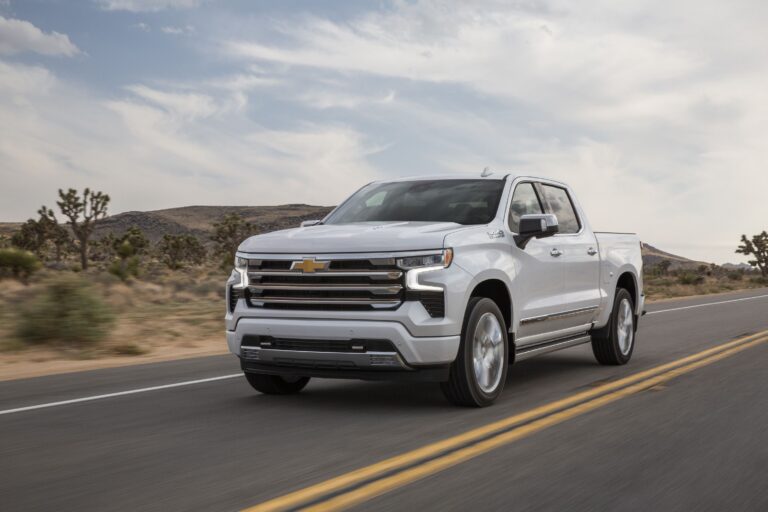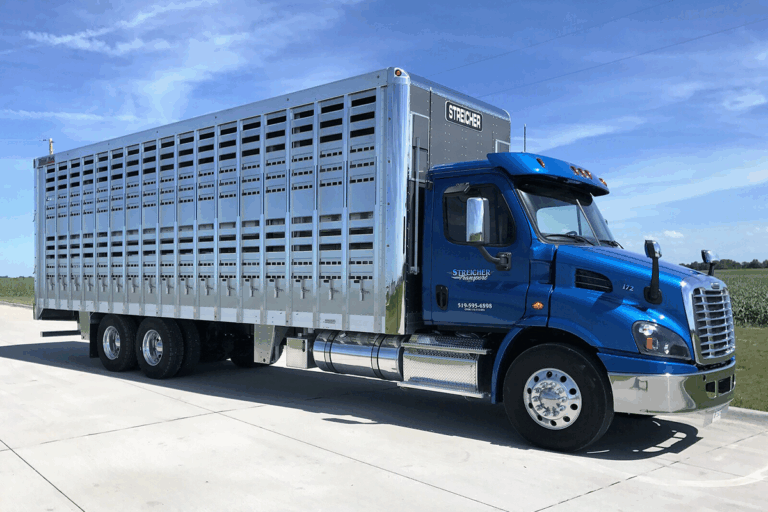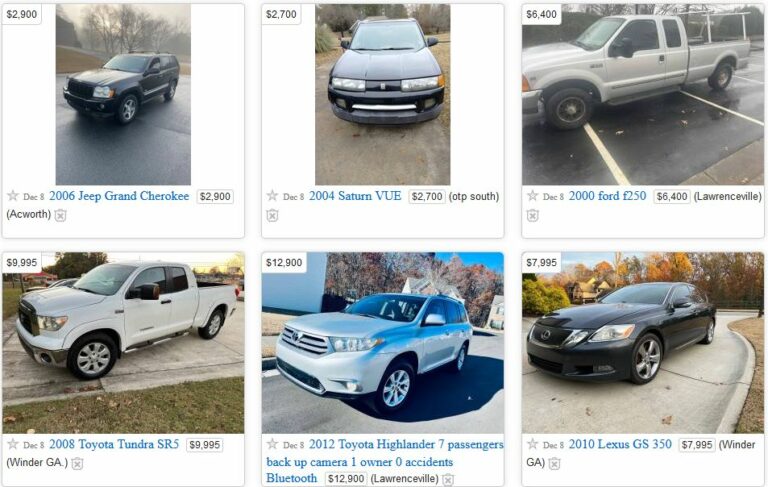Parts Of A Truck Body Under: The Unsung Heroes Beneath Your Ride
Parts Of A Truck Body Under: The Unsung Heroes Beneath Your Ride cars.truckstrend.com
Every time a truck rumbles down the road, carrying heavy loads or traversing challenging terrains, a complex symphony of components beneath its visible exterior is working tirelessly. These "Parts Of A Truck Body Under" are the unsung heroes, forming the structural backbone, propulsion system, braking mechanism, and protective layers that ensure the vehicle’s integrity, safety, and performance. Far from being mere afterthought, the underbody components are critical for a truck’s functionality, influencing everything from ride comfort and handling to load-bearing capacity and fuel efficiency. Understanding these vital elements is crucial for truck owners, operators, and enthusiasts alike, enabling proper maintenance, informed repair decisions, and a deeper appreciation for the engineering marvel that is a modern truck.
This comprehensive guide will delve into the various components that make up the truck’s underbody, exploring their functions, importance, and the practical considerations for their upkeep. From the foundational chassis to the intricate systems for movement and control, we’ll uncover the hidden world beneath your truck.
Parts Of A Truck Body Under: The Unsung Heroes Beneath Your Ride
The Foundation: Chassis and Frame
At the very core of any truck’s underbody is its chassis and frame. This is the skeletal structure that supports the entire vehicle, including the engine, transmission, body, and cargo. For most trucks, especially heavy-duty ones, this takes the form of a ladder frame, consisting of two long, parallel beams (rails) connected by several crossmembers.
- Function: Provides structural rigidity, withstands torsional forces, and serves as the mounting point for all other major components.
- Importance: Directly impacts the truck’s load-carrying capacity, handling characteristics, and overall durability. A strong, well-maintained frame prevents sagging, twisting, and ensures proper alignment of other systems.
- Considerations: Frame damage, often from accidents or overloading, can be catastrophic and expensive to repair. Regular inspection for cracks, bends, or corrosion is paramount. Materials vary, with high-strength steel being common, but advanced alloys are increasingly used for weight reduction.
Mobility and Control: Suspension and Steering Systems

The journey of power from the engine to the wheels, and the ability to steer and absorb road imperfections, rely heavily on the underbody’s suspension and steering components.
Suspension System Components
The suspension system connects the wheels to the truck’s frame, absorbing shocks from the road, maintaining tire contact, and ensuring a stable ride.
- Axles: Robust shafts that connect the wheels. Trucks typically have a front (steering) axle and one or more rear (drive) axles. Some heavy trucks also feature tag or pusher axles for increased load capacity.
- Springs: The primary shock-absorbing elements.
- Leaf Springs: Common in heavy trucks, consisting of stacked metal leaves. Durable and excellent for carrying heavy loads.
- Coil Springs: More common in lighter trucks and SUVs, offering a smoother ride.
- Air Springs (Air Bags): Increasingly popular, especially in heavy trucks and luxury pickups, providing adjustable ride height, superior comfort, and better load leveling.
- Shock Absorbers/Dampers: Work in conjunction with springs to dissipate kinetic energy, preventing excessive bouncing and maintaining tire contact with the road.
- Control Arms/Linkages: Connect the wheels to the frame, allowing for vertical movement while maintaining alignment.
- Bushings: Small, flexible components (often rubber or polyurethane) that cushion connections between suspension parts, reducing noise and vibration.
- Importance: Crucial for ride comfort, stability, handling, and tire longevity. A well-functioning suspension ensures the truck remains controllable, especially under load or on uneven surfaces.
- Maintenance: Regular checks for worn bushings, leaking shocks, broken springs, and proper alignment are essential.
Steering System Components
The steering system translates the driver’s input into directional changes for the front wheels. Many key components are located under the truck body.
- Steering Linkage: A series of rods (tie rods, drag links) and arms (pitman arm, idler arm) that connect the steering box/rack to the wheels.
- Steering Box/Rack and Pinion: The primary mechanism that converts rotational steering wheel motion into linear motion for the linkage. While the steering column connects to it from above, the main housing and connections are typically under the body.
- Power Steering Hoses: Carry hydraulic fluid (for hydraulic power steering systems) to assist in turning the wheels.
- Importance: Critical for safe and precise control of the truck. Loose or worn steering components can lead to wandering, difficulty steering, and unsafe driving conditions.
- Maintenance: Inspect for excessive play, leaks in power steering hoses, and worn ball joints or tie rod ends.
Power Delivery: Drivetrain Components
The drivetrain is the system that transmits power from the engine and transmission to the drive wheels.
- Driveshaft(s): Long, rotating shafts that connect the transmission or transfer case to the differential(s). Trucks, especially long ones or those with multiple drive axles, may have several driveshafts.
- Universal Joints (U-joints): Flexible couplings at each end of the driveshaft, allowing for changes in angle as the suspension moves.
- Differential: A complex gear assembly that allows the drive wheels to rotate at different speeds when turning, while still receiving power. Located in the axle housing.
- Transfer Case (for 4×4/AWD trucks): Located behind the transmission, it allows the driver to select between 2-wheel drive, 4-wheel drive high, and 4-wheel drive low ranges, distributing power to both front and rear axles.
- Importance: Essential for propelling the truck. Any issue with these components can lead to loss of power, vibration, or complete immobilization.
- Maintenance: Lubrication of U-joints, checking for excessive play, and ensuring differential fluid levels are correct are vital.
Safety and Compliance: Braking and Exhaust Systems
Two other critical underbody systems are the braking and exhaust systems, both vital for safety and environmental compliance.
Braking System Components
The braking system is paramount for safety, allowing the truck to slow down or stop.
- Brake Lines: Steel or reinforced rubber hoses that carry hydraulic fluid (for hydraulic brakes) or compressed air (for air brakes) to the wheel-end braking components.
- Brake Calipers/Wheel Cylinders: Actuators that push brake pads against rotors or brake shoes against drums to create friction.
- Brake Rotors/Drums: The rotating components that the pads/shoes press against.
- ABS Sensors/Modules: Monitor wheel speed to prevent wheel lock-up during braking, improving control. Many components are integrated into the wheel hubs, but wiring and some modules are under the body.
- Parking Brake Mechanism: Engages the brakes to hold the truck stationary when parked.
- Importance: Non-negotiable for safety. Malfunctioning brakes can lead to catastrophic accidents.
- Maintenance: Regular inspection for leaks in brake lines, wear on pads/shoes, rotor/drum condition, and proper fluid levels is critical.
Exhaust System Components
The exhaust system directs harmful exhaust gases away from the engine, reduces noise, and filters pollutants.
- Exhaust Manifold: Collects exhaust gases from the engine cylinders (often under the hood, but piping extends under).
- Catalytic Converter(s): Transform harmful pollutants (carbon monoxide, hydrocarbons, nitrogen oxides) into less harmful substances.
- Muffler(s): Reduce exhaust noise.
- Resonator(s): Further refine exhaust sound.
- Exhaust Pipes: Connect all components and direct gases out from under the truck.
- Importance: Essential for environmental compliance, reducing noise pollution, and ensuring optimal engine performance (a restricted exhaust can hinder power).
- Maintenance: Check for rust, holes, loose connections, and damage to catalytic converters.
Fuel Storage and Delivery: Fuel System Components
The fuel system safely stores fuel and delivers it to the engine.
- Fuel Tank(s): Securely store gasoline or diesel fuel. Located under the truck, often between the frame rails or on the side.
- Fuel Lines: Tubes that transport fuel from the tank to the engine.
- Fuel Pump: Draws fuel from the tank. Can be in-tank or chassis-mounted.
- Fuel Filter: Removes contaminants from the fuel before it reaches the engine.
- Importance: Safe and efficient delivery of fuel is vital for the engine to run. Leaks pose fire hazards and environmental risks.
- Maintenance: Inspect for leaks, corrosion on lines, and proper mounting of the tank. Fuel filters should be replaced according to manufacturer recommendations.
Protection and Ancillary Components
Beyond the core functional systems, several other underbody parts provide protection or support auxiliary functions.
- Skid Plates: Metal plates installed under vulnerable components (oil pan, transfer case, fuel tank) to protect against impacts from road debris or off-road obstacles.
- Splash Guards/Fender Liners: Partially extend under the body to protect engine bay components and the undercarriage from water, mud, and road salt.
- Undercarriage Coating/Rust Proofing: Applied to the frame and other metal surfaces to prevent corrosion, especially in harsh climates.
- Wiring Harnesses and Connectors: Routes electrical signals and power to various underbody sensors, lights, and components.
- Body Mounts: Rubber or polyurethane cushions that isolate the cab/body from the frame, reducing vibration and noise.
- Crossmembers: Transverse beams connecting the frame rails, adding rigidity.
- Spare Tire Carrier: Often mounted under the rear of the truck.
- Trailer Hitch/Receiver: Integrated into the frame for towing.
- Air Tanks (for air brake/suspension systems): Store compressed air.
Practical Advice for Underbody Maintenance
Maintaining the underbody components is crucial for the longevity, safety, and performance of your truck.
- Regular Visual Inspections: Get under your truck (safely, using jacks and stands or a lift) or have a mechanic do it. Look for:
- Rust and Corrosion: Especially on the frame, brake lines, and exhaust.
- Leaks: Oil, transmission fluid, brake fluid, fuel, coolant.
- Damaged or Worn Parts: Bent linkages, cracked bushings, frayed wires, dented skid plates.
- Loose Connections: Exhaust hangers, bolts, clamps.
- Tire Wear Patterns: Uneven wear can indicate suspension or alignment issues.
- Cleanliness: Regularly wash the undercarriage, especially after driving on salted roads, off-road, or in muddy conditions, to remove corrosive elements.
- Rust Prevention: Consider professional undercoating or rust-proofing treatments, particularly in regions with harsh winters.
- Lubrication: Follow manufacturer recommendations for lubricating U-joints, suspension components, and other grease points.
- Fluid Checks: Monitor differential fluid, transfer case fluid, and power steering fluid levels.
- Address Issues Promptly: Small issues like a leaking shock or a loose exhaust hanger can quickly escalate into major, expensive problems if ignored.
Challenges and Solutions
- Corrosion: The most common enemy. Solution: Regular cleaning, undercoating, and prompt repair of paint chips or scratches.
- Impact Damage: From road debris, potholes, or off-roading. Solution: Drive defensively, consider skid plates for vulnerable areas, and inspect for damage after impacts.
- Wear and Tear: Natural degradation of components over time. Solution: Adhere to maintenance schedules, use quality replacement parts, and address unusual noises or vibrations immediately.
- Environmental Factors: Extreme temperatures, dust, mud, and water. Solution: Regular cleaning, proper sealing of electrical connections, and using protective coatings.
Estimated Price Table for Common Truck Underbody Parts (Sample)
Please note: Prices are highly variable based on truck make/model, part quality (OEM vs. aftermarket), labor costs, and geographical location. These are estimates for reference only.
| Part Name | Description | Estimated Price Range (USD – Part Only) | Typical Replacement Frequency (Miles/Years) |
|---|---|---|---|
| Leaf Spring | Single unit for suspension | $150 – $400 | 100,000 – 200,000 miles / 10-15 years |
| Shock Absorber | Single unit for dampening suspension | $50 – $250 | 50,000 – 100,000 miles / 5-7 years |
| Brake Rotor | Single unit, front or rear | $80 – $300 | 30,000 – 70,000 miles (with pad changes) |
| Brake Caliper | Single unit, remanufactured | $100 – $350 | 100,000 – 150,000 miles / As needed |
| Driveshaft (U-joint) | Single U-joint for driveshaft | $30 – $80 | 50,000 – 100,000 miles / As needed |
| Fuel Tank | Replacement fuel tank | $300 – $1000+ | As needed (due to damage or severe rust) |
| Catalytic Converter | Single unit, aftermarket | $300 – $1500+ (OEM much higher) | 100,000 – 150,000 miles / As needed |
| Muffler | Single replacement muffler | $70 – $250 | 50,000 – 100,000 miles / 5-10 years |
| Tie Rod End | Single unit (inner or outer) | $40 – $120 | 50,000 – 100,000 miles / As needed |
| Ball Joint | Single unit | $50 – $180 | 70,000 – 120,000 miles / As needed |
| Skid Plate | Aftermarket protection plate (specific area) | $150 – $500 | As needed (due to damage) |
| Frame Repair (minor) | Welding/reinforcement for small crack (labor-intensive) | $500 – $2000+ | As needed (after inspection) |
| Undercoating/Rust Proofing | Professional application service (full underbody) | $300 – $800 | Every 2-5 years |
Note: Labor costs for installation can often equal or exceed the part cost, especially for complex replacements like catalytic converters or frame repairs.
Frequently Asked Questions (FAQ)
Q1: Why is it important to inspect the underbody of my truck regularly?
A1: Regular inspection helps identify potential issues like rust, leaks, worn components, or damage from impacts before they become serious safety hazards or lead to expensive breakdowns. It ensures your truck remains safe, reliable, and performs optimally.
Q2: How often should I inspect my truck’s underbody?
A2: A basic visual inspection can be done with every oil change (every 5,000-10,000 miles). A more thorough inspection by a professional should be part of your annual maintenance, or more frequently if you drive in harsh conditions (e.g., salted roads, off-road).
Q3: What are common signs of damage or wear in underbody parts?
A3: Look for excessive rust, fluid leaks (puddles under the truck), unusual noises (clunks, squeaks, grinding, rattles), vibrations while driving, difficulty steering, uneven tire wear, or a noticeable change in ride quality (e.g., excessive bouncing).
Q4: Can I rust-proof my truck’s underbody myself?
A4: Basic rust prevention like cleaning and touch-up painting can be done yourself. However, for comprehensive and effective rust-proofing, it’s generally recommended to have a professional apply specialized coatings that penetrate and protect hard-to-reach areas.
Q5: What’s typically the most expensive underbody repair?
A5: Major frame damage (requiring straightening or extensive welding), significant transmission or differential repairs, and catalytic converter replacements (due to the cost of precious metals) can be among the most expensive underbody repairs.
Q6: How do environmental factors like road salt affect underbody parts?
A6: Road salt is highly corrosive and accelerates rust formation on metal components like the frame, brake lines, exhaust system, and suspension parts. Regular washing, especially after driving on salted roads, is crucial to mitigate its effects.
Q7: Is it safe to drive with a damaged underbody part?
A7: It depends on the part. A minor dent in a skid plate might be okay temporarily, but issues with critical components like brake lines, steering linkage, suspension, or the frame itself can severely compromise safety and should be addressed immediately. When in doubt, have it inspected by a professional.
Conclusion
The "Parts Of A Truck Body Under" are the unsung, yet indispensable, architects of a truck’s strength, performance, and safety. From the robust frame that bears the load to the intricate systems that facilitate movement, braking, and steering, each component plays a vital role. Understanding these elements empowers truck owners to make informed decisions about maintenance, recognize potential issues early, and ultimately extend the lifespan and reliability of their valuable asset. Regular inspection, timely repairs, and proactive protection are not just good practices; they are essential investments in the continued performance and safety of your truck, ensuring that it remains a dependable workhorse for years to come.





